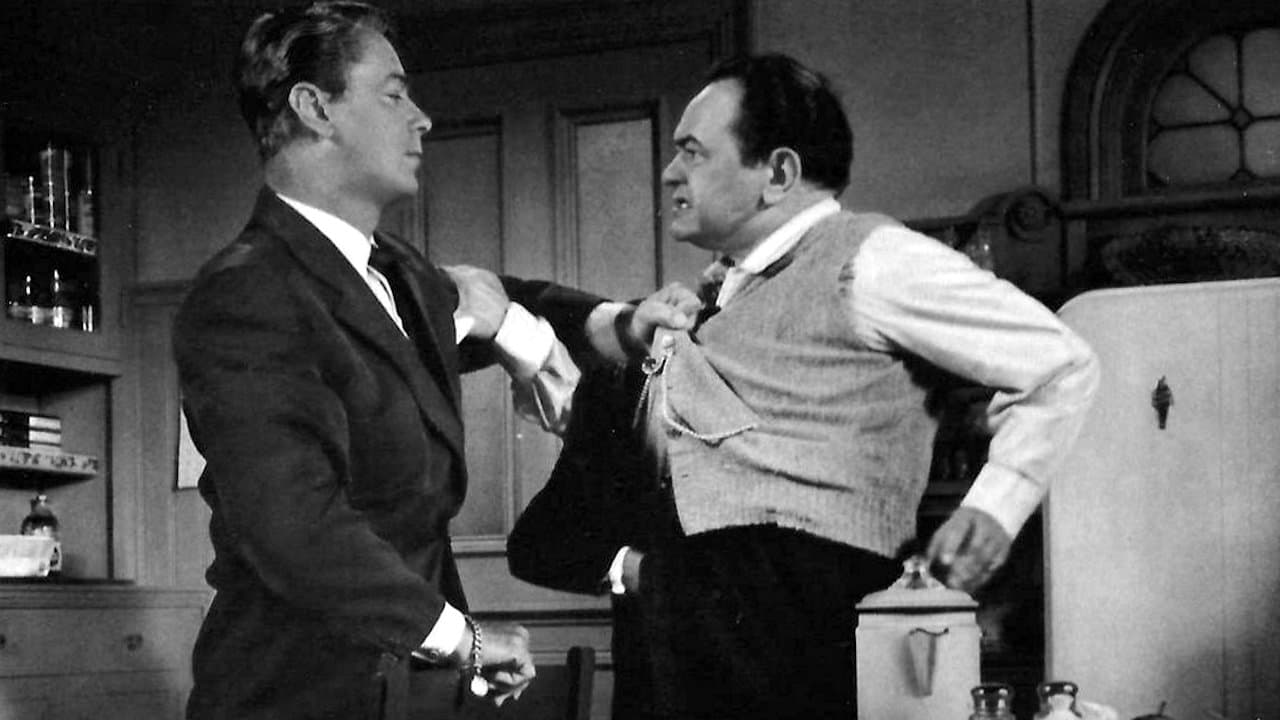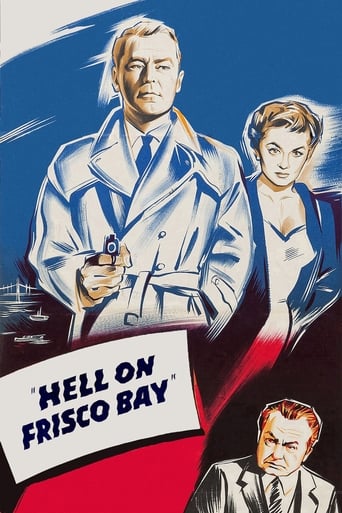



Perfect cast and a good story
I like movies that are aware of what they are selling... without [any] greater aspirations than to make people laugh and that's it.
View MoreA Brilliant Conflict
This is a gorgeous movie made by a gorgeous spirit.
View MoreDirector: FRANK TUTTLE. Screenplay: Sydney Boehm, Martin Rackin. Based on the Collier's magazine serial, "The Darkest Hour", by William P. McGivern. Photographed in CinemaScope and Eastman Color by John F. Seitz. Film editor: Folmar Blangsted. Art director: John Beckman. Set decorator: William L. Kuehl. Make-up: Gordon Bau. Costumes: Moss Mabry. Music composed by Max Steiner, orchestrated by Murray Cutter. Assistant director: William Kissel. Sound recording: Charles B. Lang. Associate producer: George C. Berthelon. Producer: Alan Ladd. A Jaguar (Alan Ladd) Production, released through Warner Brothers Pictures. U.K. release: 28 May 1956. Sydney opening at the Plaza. 98 minutes.SYNOPSIS: After serving a five-year term for manslaughter, a wrongly convicted ex-cop goes after the waterfront gangster who was really responsible.COMMENT: Alan Ladd versus Edward G. Robinson, the posters promised, but, disappointingly, the screenplay keeps the two stars apart until the climax. In fact, Ladd and Robinson share only two scenes. For most of the movie, Robinson plays against Paul Stewart, and it is these two actors rather than producer Ladd, who provide the story's chief points of friction. Nonetheless, Robinson is always in his element and the script does come to a grand climax on San Francisco Bay in which CinemaScope is brilliantly utilized to round off the movie with maximum dramatic impact. In other respects, however, director Frank Tuttle's hand seems somewhat lethargic. The color photography suffers from the early CinemaScope disease of over-graininess, but rates as reasonably acceptable. Indeed, most audiences probably won't notice, especially in theaters with smaller screens. On the Plaza's huge screen, however, where I saw the movie, the color looked undeniably blotchy.
View MoreA film noir shot in colour, in cinemascope, with scenes set mostly outdoors during daylight hours, and making ample use of San Francisco's picturesque landscape, starts out with several counts against it.But contravention of most if not all of the conventions of the noir genre is the least of this movie's problems.The biggest drag on the story is its star. Alan Ladd strolls through the plot like a Californian Redwood on legs. If it weren't a clash of materials, it would not be unfair to characterise his woodenness as robotic. There's not an ounce of enthusiasm or conviction in his performance as Steve Rollins, an ex-cop wrongly convicted of manslaughter, who leaves jail vowing vengeance on the gangsters who framed him.Ridiculously attired in a linen suit that never creases or stains despite several bare knuckle dust ups, he fearlessly provokes corrupt waterfront boss Victor Amato (Edward G Robinson) into a showdown that can only result in death or victory.Along the way, just to demonstrate what a straight-up, honorable guy he is, Rollins rebuffs his wife (Joanne Dru) for a moment of weakness while he was in jail (but only after he'd refused to let her visit him for three years) and comes to the aid of a nightclub singer (Fay Wray) whose life Amato is threatening. All of which Ladd achieves without once moving a facial muscle.So thank god for Edward G.Robinson! He singlehandedly saves HELL ON FRISCO BAY with a performance that is considerably better than the film deserves. Robinson's career was in a slump in 1955, mostly as a result of the anti-communist blacklist, and he was no longer getting A-list parts, but he never stopped giving his best to whatever work came his way. He's as great here as he was in 'Little Caesar' and 'Key Largo.' His Victor Amato is a fully-rounded, believable and disturbing character, a psychopath who can charm the parish priest one moment and order the murder of his own nephew the next. When Robinson's on screen it's almost possible to forget he's inhabiting the same story as dreary lifeless Alan Ladd.Credit is also due to Paul Stewart who makes the most of his underwritten part as Amato's put-upon right hand man, and watch out for an uncredited but instantly recognisable Jayne Mansfield in her last bit part before exploding into America's consciousness with 'The Girl Can't Help It' a few months later.HELL ON FRISCO BAY is a decidedly mediocre tale but a fine example of an actor proving himself better than the material he's given to work with. Watch this and you may well be put off Alan Ladd for life but you'll definitely want another serving of the wonderful Edward G Robinson.Read more of my reviews at http://thefilmivejustseen.blogspot.com/
View MoreUnless you happened to have seen this movie on TV, you have probably not seen it. It has not been released for DVD, although it is a big budget movie filmed in Cinemascope. Like most Cinemascope films of the time, it brings in the flavor of the locale with panorama shots. I see it a a period piece first and film noir only because of Robinson. For its time, it was incredibly gritty.Robinson is the classic Little Ceasar, and his performance carries the movie. Ladd may have been miscast, but carries the part OK. The dynamic boat-ride ending may be commonplace now, but was a real innovation at the time.I have always wondered why this film was not released on tape or DVD. Perhaps its the title, since San Franciscans loath the nickname "Frisco."
View MoreIn Hell on Frisco Bay Alan Ladd who also produced this film plays an ex-cop who's served five years on a manslaughter rap for which he was wrongly convicted. Of course as in the case of noir films he's on a mission to find the real killer and clear himself.It doesn't take him long to sniff out a trail that leads to San Francisco underworld boss Edward G. Robinson. Robinson is easily the best in the cast. He's as malevolent as he was in Little Caesar or at least in Key Largo. It's not that Hell on Frisco Bay is a bad film, but it's all so routine for Alan Ladd. He would not transition into character roles as he hit his forties. His legion fans which were gradually dwindling by this time still wanted their guy in action hero parts.He's not terribly animated here. I wouldn't have been surprised if he was ill during the making of this. In a way that might have helped the believability factor. Five years in jail would have given him a certain prison pallor to his complexion.Alan Ladd liked having friends around and the cast here is filled with players who were close personal friends and/or co-workers from his Paramount days. They include, Anthony Caruso, George J. Lewis, Peter Hansen, Perry Lopez, William Demarest. Look for young Rod Taylor as a contract killer and Jayne Mansfield in her screen debut as a bimbo.Joanne Dru plays the estranged Mrs. Ladd and was probably grateful to be in a modern setting. Paul Stewart gives a memorable performance as Robinson's chief henchman along with his lady love Fay Wray who played a former movie star who was keeping company with Stewart. Their relationship with Robinson is the key to the story.Cinemascope and noir usually don't mix, but in this case with the final scene being a police chase and fight with speedboats across San Francisco bay, cinemascope helped greatly.Fans of both Alan Ladd and Edward G. Robinson will enjoy this film.
View More